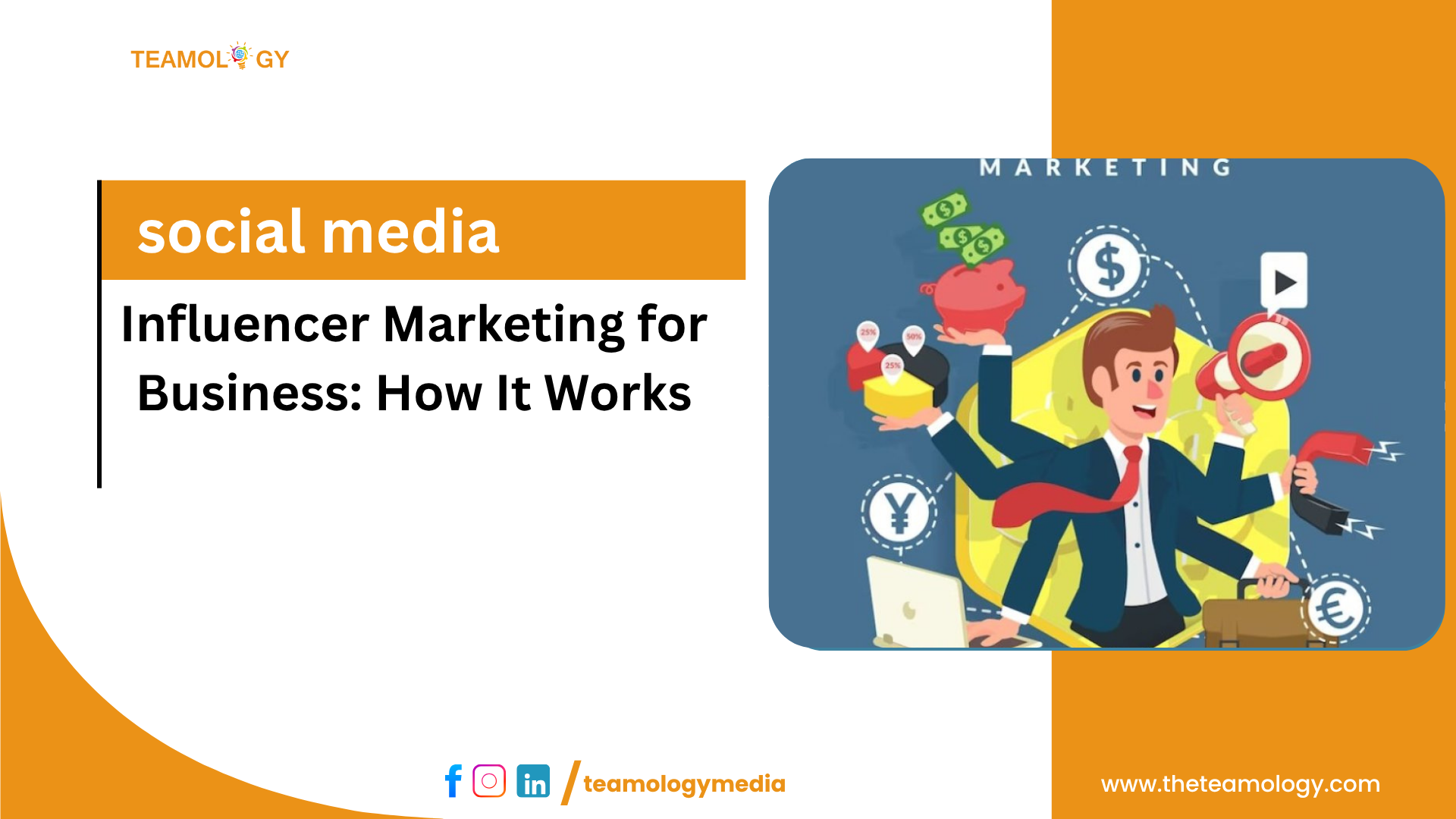Introduction
In the past, ads blasted at audiences through TV screens and billboards. However, as the markets changed, so did the people. Now, the voice that truly influences consumers is the one they trust. That’s the essence of influencer marketing, a mix of storytelling, psychology, and community-driven persuasion.
It is essential to understand what influencer marketing is and how it works. Let’s take a deep dive to know why influencer marketing is a key part of modern business strategy.
Understanding Influencer Marketing
In simple words, influencer marketing is just brands teaming up with individuals who have a loyal audience to promote their products and services. These individuals are the influencers we refer to. Influencers have the credibility, charm, and connection that traditional ads often lack. These days, people trust influencers to give them honest feedback about projects and services. Hence, brands must collaborate with influencers to attract customers.
Influencers show their audience how a product or service fits into their everyday routine, rather than shouting “buy this”. This authenticity helps turn followers into customers.
Main Types of Influencer Marketing
Every collaboration that happens in the market is different. Depending on your goal, budget, and target audience, the type of influencer marketing you choose varies. Some of the most common formats are:
- Sponsored Content: An influencer is compensated by the brand to promote its product via a post or video.
- Product Reviews: Influencers provide honest opinions and feedback after trying a product or service.
- Giveaways and Contests: Audiences engage with the brand by entering challenges or raffles.
- Affiliate Marketing: For every sale made through the brands’ referral links, influencers earn a commission.
- Brand Ambassadorships: In this format, an influencer consistently represents a brand for long-term partnerships.
Choosing the right influencer marketing strategy for your campaign helps balance authenticity with exposure.
The Benefits of Influencer Marketing
It is said that influencer marketing is the “digital word-of-mouth.” There are numerous benefits of influencer marketing. Followers trust the influencer’s taste, so recommendations feel genuine, and compared to traditional ads, influencer posts generate more comments, shares, and clicks. In addition, brands can connect with niche audiences that align with their ideal demographics. Social buzz enhances brand mentions, backlinks, and search rankings. Micro-influencers often deliver strong results at a fraction of the cost of celebrity endorsements.
How an Influencer Agency Works
Many brands choose to hire professionals to handle the process. That’s where an influencer agency comes in. An influencer marketing agency acts as a link between brands and influencers. They manage everything, including selecting the right personalities and handling contracts, briefs, timelines, and results.
Following is how an influencer agency works:
- Understanding Brand Goals: The agency examines the brand’s identity, audience, and marketing objectives.
- Curating the Right Influencers: Using data-driven tools and industry contacts, they identify creators who match the campaign’s tone and values.
- Campaign Execution: They oversee deliverables—posts, videos, or stories—and ensure adherence to brand guidelines.
- Performance Tracking: Each campaign is evaluated on reach, engagement, and ROI.
Working with an influencer marketing agency streamlines logistics and saves brands from the time-consuming chaos of individual negotiations.
The Influencer Campaign Proc
Every viral post goes through a carefully planned influencer campaign process. This is how the process works:
- Firstly, decide what success looks like—awareness, sales, app installs, or followers. Then, allocate funds for influencer payments.
- Then comes the most important step: influencer selection. Choose an influencer who aligns with your brand’s tone and values.
- Next, provide influencers with clear guidelines on how you want to be represented while allowing room for creativity.
- Based on the guidelines, influencers produce and share the agreed content.
- The final step is tracking and reporting. Analyse engagement, conversions, and feedback to improve future campaigns.
The Role of Influencer Outreach Tools
In the past, we had to spend hours scrolling through social media to find and connect with these influencers. However, today, technology has changed immensely. Now, brands and agencies use influencer outreach tools to simplify communication and monitor progress. You can identify influencers by niche, audience demographics, and engagement rates. Then automate outreach messages and follow-ups. It is also possible to manage collaborations and contracts in one place and monitor performance metrics in real time.
Using the right influencer outreach tools keeps the workflow efficient, clear, and data-driven—essential when managing multiple campaigns.
The Power of Influencer Discovery Platforms
A good influencer discovery platform lets you search for thousands of potential creators by audience type, follower count, content style, and location. Brands use these platforms to spot emerging talent before others do and assess engagement authenticity. Also, they use it to understand audience sentiment and alignment with brand values.
The Future of Influencer Marketing
As digital spaces change, so does influence. The way creators interact with viewers is changing due to AI-driven analytics, live shopping, and short-form videos. Yet, one element remains constant—the human factor.
In the coming years, we’ll see a greater focus on micro and nano-influencers who offer intimacy and authenticity. Data will guide decisions, but emotional connections will still drive purchases.
Conclusion
To put it in a nutshell, understanding how influencer marketing works well helps you build trust on a large scale among the masses. From choosing the right influencer marketing strategy to collaborating with an influencer marketing agency, the process is part science and part art.
When done thoughtfully, it leads to measurable returns and lasting loyalty—turning followers into advocates and moments into movements.


